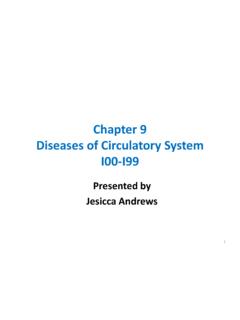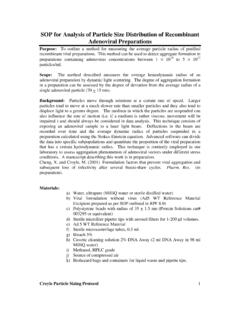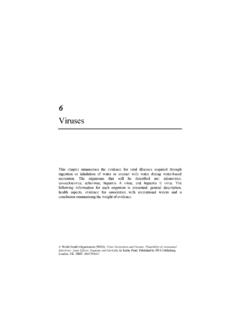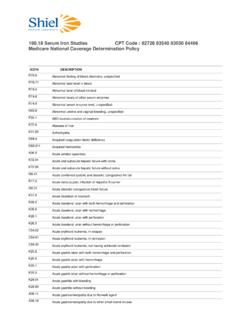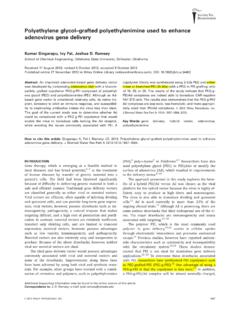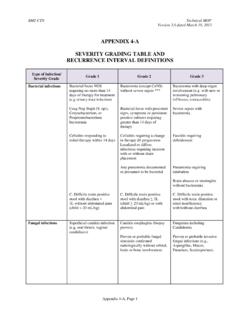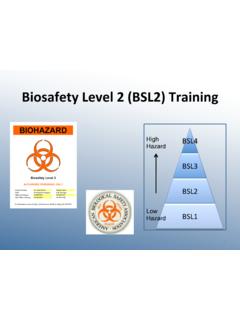Transcription of Chapter 10 Respiratory System J00-J99
1 Chapter 10 Respiratory SystemJ00-J99 Presented by:Jesicca Andrews1 Respiratory System2 Respiratory Infections A Respiratory infection cannot be assumed from a laboratory report alone; physician concurrence and documentation are necessary. Remember that infectious organisms are not always identified by laboratory examination, particularly when antibiotic therapy has been started; an infection code may be assigned without laboratory evidence when it is supported by clinical documentation. 3 PneumoniaCategoryDescriptionCharactersSu bcategoriesJ12 Viral, nec4-5 AdenoviralRespiratory syncytialParainfluenzaHuman metapneumovirusOtherJ13 Due to strep pneumoniae3J14 Due to Hemophilusinfluenza3J15 Bacterial, nec4-6 KlebsiellaGram-(aerobic)
2 Pseudomonas StaphStrep group B Other StrepMycoplasmapneumoniaeE-coli Other UnspecifiedJ16 Due to other infectious organisms4 ChlamydiaOther specifiedJ17In diseasesclassified elsewhere3 RheumaticfeverJ18 Unspecified organism4 Bronchopneumonia OtherHypostatic UnspecifiedLobarJ69 Aspiration4 Food & VomitOil & Associated64 Pneumonia Pneumonia is a common Respiratory infection that is coded in several ways in ICD-10-CM. Combination codes that account for both pneumonia and the responsible organism are included in chapters 1 and 10 of of appropriate codes for pneumonia include the following: due to Klebsiella due to Staphylococcus aureus pneumonia pneumonia + Viral pneumonia with influenza Other pneumonias are coded as manifestations of underlying infections classified in Chapter 1, and two codes are required in such cases.
3 Examples of this dual classification coding include the following: I00 + J17 Pneumonia in rheumatic fever + J17 Pneumonia due to schistosomiasis When the diagnostic statement is pneumonia without any further specification, the coder should review laboratory reports for mention of the causative organism and check with the physician to determine whether there appears to be support for a more definitive diagnosis. When the organism is not identified assign: Pneumonia, unspecified organism5 Aspiration Pneumonia Aspiration pneumonia is a severe type of pneumonia resulting from the inhalation of foods, liquids, oils, vomitus, or microorganisms from the upper Respiratory tract or the oropharyngealarea.
4 Pneumonitisdue to inhalation of foods or vomitus Pneumonitisdue to inhalation of oils and essences Pneumonitisdue to inhalation of other solids or liquids Pneumonia due to aspiration of microorganisms is classified to category J15bacterial J12viral Patients transferred from a nursing home to an acute care hospital because of pneumonia are often suffering from aspiration pneumonia due to aspirated organisms, usually gram-negative bacteria. 6 Ventilator-Associated Pneumonia (J95) Pneumonia associated with the use of a ventilator is assigned to code associated pneumonia In addition to a code to identify the organism, if known ( , , ) should be assignedFor example: Ventilator-associated pneumonia (VAP) due to Staphylococcus Do not assign an additional code from categories J12through J18to identify the type of pneumonia.
5 NOTE: Code be assigned onlywhen the provider has documented VAP. As with all procedural or postproceduralcomplications, code assignment is based on the provider's documentation of the relationship between the condition and the procedure. not be assigned for cases where the patient has pneumonia and is on mechanical ventilation, and where the provider has not specifically stated that the pneumonia is VAP. The provider should be queried when the documentation is unclear. It is clinically possible for a patient to be admitted with one type of pneumonia and to develop VAP later. The principal diagnosis is the type of pneumonia diagnosed at the time of admission (J12-J18), and code is a secondary Pneumonia Gram-negative pneumonia requires careful management.
6 Affects people who are hospitalized, infants, the elderly, alcoholics, and patients with chronic diseases. Patients tend to be sicker; their condition deteriorates quickly because the bacteria can rapidly destroy lung tissue. Mortality is 25 to 50 percent. A diagnosis of gram-negative or other bacterial pneumonia cannot be assumed by lab or clinical findings; only the physician can dx. Such findings can, however, help document a dxor serve as the basis for a query. Gram-positive pneumonia is far easier to treat, and requires the expenditure of fewer resources, than gram-negative pneumonia. other aerobic Gram Negative bacteria NEC other specified bacteria bacterial (Gram Positive bacteria)8 Exercise pneumoniawith influenza pneumoniadue to aspiration of vomitus9 Exercise pneumoniawith influenza + (see pneumonia, lobar) (see influenza with pneumonia) (see pneumonia, in (due to) Klebsiella) pneumoniadue to aspiration of (see pneumonia, aspiration, vomitus)
7 10 InfluenzaCategoryDescriptionSubcategorie s J09 due to certain identified virusesInfluenza due toindentified novel influenza A virus-Avian-Bird-A/H5N1-Swine-Other animal origin 1 Pneumonia2 Other Respiratory manifestations3 Gastrointestinal manifestations9 Other manifestations J10 Influenza due to otheridentified viruses0 Pneumonia1 Other Respiratory manifestations2 Gastrointestinal manifestations8 Other manifestationsJ11 Influenza due to unidentified influenza virus0 Pneumonia1 OtherRespiratory manifestations2 Gastrointestinal manifestations8 Other manifestations11 Influenza with Pneumonia, code also the specified type of PneumoniaInfluenza Guidelines Codes from category J09should be assigned only for confirmedcases of avian flu or other novel influenza A.
8 In this context, "confirmation" does not require documentation of positive laboratory testing; however, it does require provider documentation of avian influenza or other novel influenza A. A code from category J09is not assigned when the diagnostic statement indicates that the infection is "suspected," "possible," "likely," or "?". This advice is an exception to the general guideline that directs the coder to assign a code for a diagnosis qualified as "suspected" or "possible" as if it were established. Instead, a code from category J11, Influenza due to unidentified influenza virus, should be assigned12 COPD (J44) Chronic obstructive pulmonary disease (COPD) is a general term used to describe a variety of conditions that result in obstruction of the airway.
9 ICD-10-CM classifies these conditions to category J44, Other chronic obstructive pulmonary disease. Category J44includes the following conditions: Asthma with chronic obstructive pulmonary disease Chronic asthmatic (obstructive) bronchitis Chronic bronchitis with airways obstruction Chronic bronchitis with emphysema Chronic emphysematous bronchitis Chronic obstructive asthma Chronic obstructive bronchitis Chronic obstructive tracheobronchitisFourth character required to further specify: w acute lower Respiratory w acute unspecified Use additional code to identify the infectionIf applicable, use an additional code from category J45to specify the type of Asthma13 COPD An acute exacerbation is a worsening or a decompensationof a chronic condition.
10 An acute exacerbation is not equivalent to an infection superimposed on a chronic condition, though an exacerbation may be triggered by an infection. Examples of the terms classified to Chronic obstructive pulmonary disease with (acute) exacerbation: "exacerbation "in exacerbation" "decompensated "acute exacerbation" "exacerbated "uncompensated." When the diagnosis is stated only as COPD, the coder should review the medical record to determine whether a more definitive diagnosis is documented. Code , Chronic obstructive pulmonary disease, unspecified,is assigned only when a more specific code cannot be assigned.





